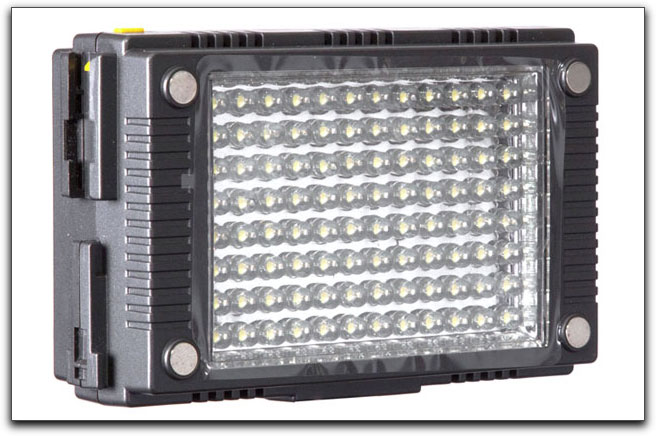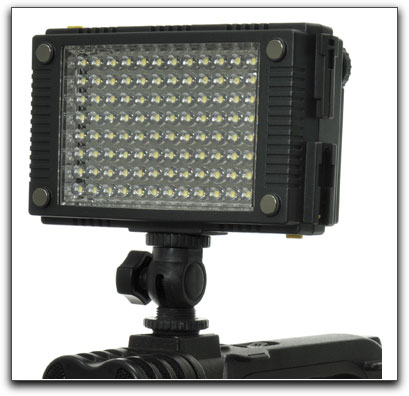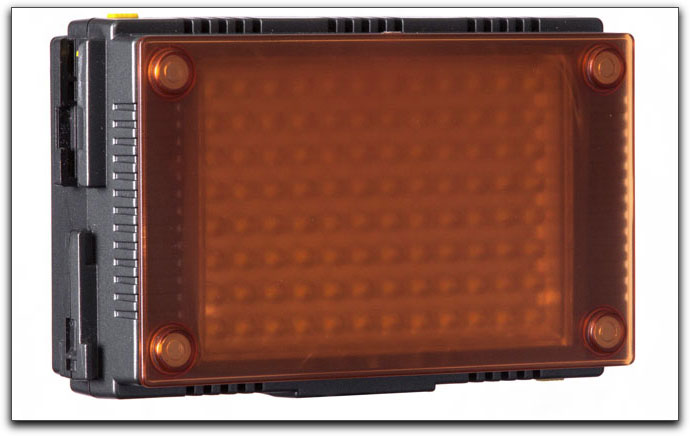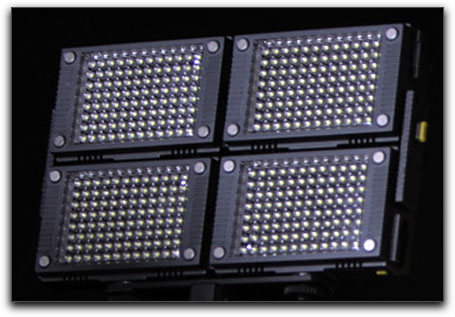But Sony and Panasonic are also in the professional and semi-pro video camera business. They looked at Canon's success in the movie / TV industry with the 5D MKII and were faced with a quandary. They could easily make large sensor video cameras based on their DSLR technology, but what would this do to their traditional pro video products?
But capitalism has its greatest strength when commercial competition becomes inevitable. No one wanted to be the first to blink, but slowly over the past year or so both Sony and Panasonic put their toes in the water, and now the flood gates are opening (if you'll excuse the mixed metaphor).
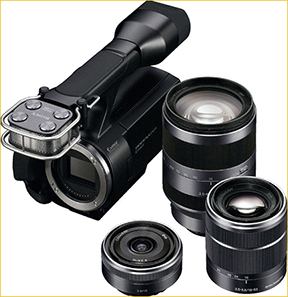
Sony NEX VG10
First out of the block was Sony with its VG10 video camera, based on the new NEX series. These use an APS-C sized sensor. As I noted in my initial review, this isn't that exciting a video camera. It had a lot of potential, but clearly Sony was nervous about cannibalizing its pro video cameras, so they clearly crippled the camera's capabilities so that it wouldn't be a threat.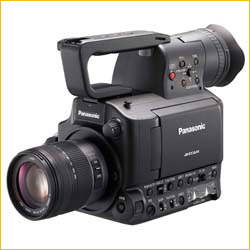
Panasonic AF100/101
Sony's immediate rejoinder was its pro-grade CineAlta F3. This uses PL mount lenses and a Super 35MM sized sensor (similar in size to APS-C, and somewhat larger than Four Thirds), but is a bit out of our league in terms of price (US $23,000) and specification. Nevertheless, it was a signal that Sony had bit the bullet and decided to play.
Sony Super 35 NEXCAM
Surprisingly, and showing that they aren't simply willing to compete by halves, not long afterward, in late November 2010, Sony announced a Super 35 NEXCAM camera that uses their NEX E lens mount and a top of the line AVCHD codec. This is the camera that the VG10 should have been.FUD – Fear, Uncertainty and Doubt
There is no word on the price (rumoured to be sub $7,000) of the Sony Super 35 NEXCAM, exact specifications, or model name. Delivery is simply mentioned as mid-2011. So, what is this about? Why announce a product more than half a year before it is due, and while it's still in the development stage. This simply isn't Sony's usual MO.
If you ever worked in the mainframe or mini computer industry you will know what I mean when I use the phrase Fear, Uncertainty and Doubt. FUD was IBM's tactic whenever a competitor announced a new product due to ship in a short while. IBM might not have anything even close to ready to compete, but they would announce that they had something coming, and would detail some rough specs and a delivery date.
That was all it took to derail their competitors from grabbing too much market share. Since "No one ever got fired for buying IBM," as the well known phrase went, simply knowing that there was something coming from Big Blue was enough to cost competitors sales, while many customers waitied to see what the guys in Armonk had coming for them.
Sony's CineAlta F3 will be available soon as well, but at 4X – 5X the price of the AF100 it is targeted at a much more elevated market segment than the Panasonic.
All of this makes sense given the two company's market positions. Sony is a major player in the broadcast industry while Panasonic's involvement in video stops at the top end of the indy / prosumer market. Sony has a lot more to lose than does Panasonic by the large sensor interchangable lens video revolution.
So What?
If you are involved professionally or personally in the video segment of the market I assume that the above will have been of some interest – pointing out some of the exciting products that are coming our way in the weeks and months ahead.
Needless to say, the traditional small-sensor pro and semi-pro camcorder business is about to be whacked up-side the head. While deep DOF small sensor camcorders are desirable for some documentary work, anyone doing narrative movie production at any level – from Hollywood films to New York TV shows to Indy producers are going to fall all over themselves over the shallow DOF capability of this generation of large sensor interchangeable lens cameras.
And while the massively shallow DOF of the full frame Canon 5D MKII is oh so attractive, many film makers find it hard to work with. It's actually too shallow for day-to-day shooting, and if one stops down to reduce DOF then one needs to add more light to the scene, which is contrary to the gestalt of current film making, let alone today's constrained production budgets.
The smaller (but still large in cine terms) APS-C and Four Thirds sensors are at the sweet spot; small enough to allow shallow DOF when desired, yet not so shallow that a moderate aperture presents lighting issues. Indeed the Four Thirds sensor's size is isn't that much smaller than traditional 35mm motion picture film.Thus we will have both Sony and Panasonic with their new video cameras having sensors aimed at the DOF sweet spot.
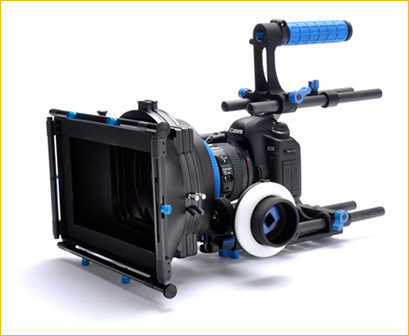
All of the begs the question – is there room for video DSLRs in this new brave new large sensor video camera world? The answer is likely both yes and no. At the pro level there will always be those cinematographers who love the small size / big picture that a DSLR offers when shooting video. But for anything other than shooting in incredibly tight quarters, DSLRs make truly terrible cine cameras.
To be usable they need a range of handling accessories that increases their bulk to that of a proper video camera. They also are completely lacking in terms of obligatory video features such as built in ND filters, zebras, peaking, under and over cranking, live EVFs, wave form monitors, and the like.
I therefore think that over the next year or so the video DSLR revolution, begun by Nikon with the D90 and brought to a peak by the Canon 5D MKII, will have run its course. Naturally all DSLRs will continue to offer ever-improving video capability, but they will essentially remain stills cameras that can (Oh, by the way) shoot video, while the new generation of large sensor video cameras such as the AF100 and Super 35 NEXCAM become the tools of choice for Indy film makers and other budget-oriented producers and cinematographers.
At the high end we will have Sony, with its new CineAlta F3 and successors. Whether Panasonic will decide to play in this more rarified segment remains to be seen. This is traditionally Sony CineAlta, Arri Alexa, and RED territory.
